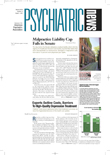The average total research and development cost for new drugs in the late 1990s was $897 million, according to a report by the Tufts Center for the Study of Drug Development.
That total was more than double the average total cost of bringing a new drug to market in the 1980s, and more than five times the cost in the 1970s.
This rapid rise in research and development (R&D) costs has been driven largely by steep increases in the costs of clinical testing, which have grown five times as fast as preclinical testing costs, the center states.
The Tufts Center for the Study of Drug Development, affiliated with Tufts University, provides strategic information to help drug developers, regulators, and policymakers improve the quality and efficiency of pharmaceutical development, review, and utilization.
“The overall increase in costs was largely driven by increases in development costs during the clinical studies period, as opposed to basic research,” Joseph DiMasi, Ph.D., director of economics for the center, told Psychiatric News. “The number of subjects has increased substantially over the period, and the complexity of clinical trials has increased, with more procedures being applied and more tests than in the past.”
A particularly noteworthy component of the increase in costs of clinical testing is the rise in “postapproval” research and development. This refers to clinical studies performed after FDA approval—known as Phase IV studies—which are often mandated in the case of drugs that are put on a fast track for approval. Fast-track approval status requires manufacturers to commit to continuing clinical testing after marketing approval.
Most of the drugs on fast-track approval are developed for cancer or AIDS, DiMasi said. While fast-track approval was originally designed for drugs to treat life-threatening conditions, he continued, it is increasingly being used for drugs to treat serious conditions, but not immediately life threatening.
“The FDA is opening more drugs to postapproval commitments, thereby shifting the R&D costs to the postapproval period,” DiMasi said.
Other Reasons at Work
Also contributing to the rise in clinical testing costs is the fact that more companies are testing their products against competitors’ drugs, as opposed to testing them against a placebo. Those tests are longer and require larger sample sizes, DiMasi said.
Alan Gelenberg, M.D., chair of APA’s Committee on Research on Psychiatric Treatments, acknowledged the validity of the study’s findings, but said there may be many factors involved in the increase in R&D costs that are unrelated to the development of drugs, including the costs of mergers within the pharmaceutical industry.
Gelenberg also said that while the pharmaceutical industry is spending more money on research and development, researchers at academic medical centers—which have traditionally relied on pharmaceutical funding of clinical studies to finance research projects—have actually found their resources shrinking as companies have turned to contract research organizations to conduct clinical studies.
Gelenberg is professor and chair of psychiatry at the University of Arizona.
Three Decades of Studies
The Tufts Center study is the third in a series of studies on the costs of drug development. The first, published in 1979, looked at the costs of drugs brought to market approval during the 1970s; the second looked at costs in the 1980s; the recent study looks at costs of research and development for drugs brought to market in the late 1990s.
Data for the present study were obtained from 10 multinational, foreign, and U.S. pharmaceutical firms through a confidential survey. Data were collected on clinical phase costs for a randomly selected sample of investigational drugs in development by firms participating in the study. Sixty-eight drugs were studied, including those that made it to market, drugs that were not brought to market, and some that were still in development.
DiMasi told Psychiatric News that a new study not yet published will be looking at costs of drug development by therapeutic category. That report will look at drugs in four categories: analgesic drugs, anti-infection drugs, central nervous system drugs, and cardiovascular drugs.
Another noteworthy finding, DiMasi said, was that drug companies appear to have become better at weeding out drug failures early in the development process. The rate of drugs that failed Phase I testing was 37 percent in the 1990s, compared with 32.5 percent in the 1980s.
Yet even with this increasing success at weeding out failures before they proceed to more expensive testing and development, only 21.5 percent of the drugs that begin Phase I clinical trials ever get to market, according to the center.
“Making the process more efficient involves making earlier decisions and attempts to shorten the development process,” DiMasi said. ▪
